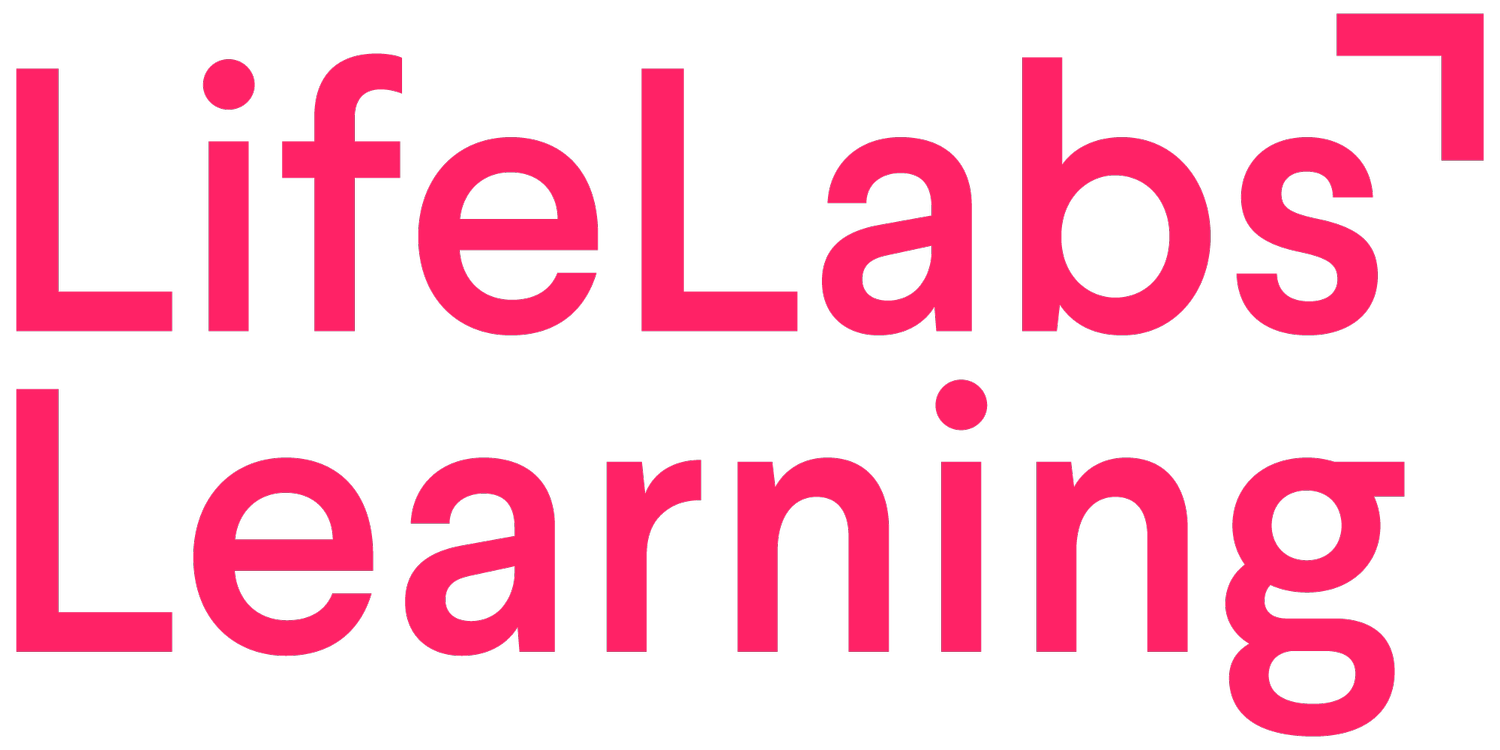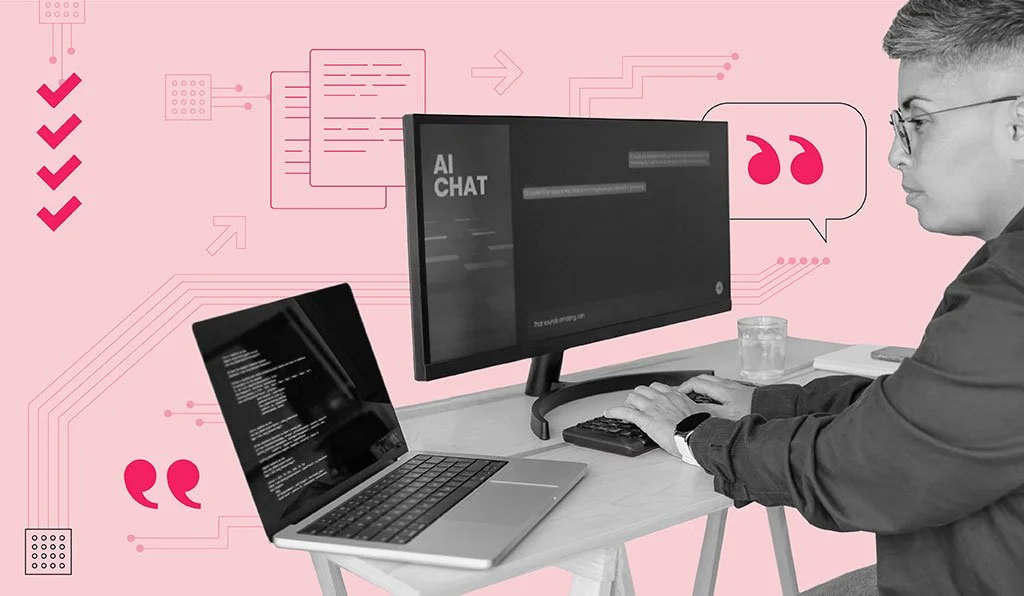Artificial Intelligence in the Workplace: Equipping Leaders for the Rise of AI
Everybody’s talking about Artificial Intelligence (AI). In the workplace, it’s quickly gone from a buzzword to a force, poised to reshape and redefine our typical 9-to-5. We’re no longer asking whether AI will affect the way we work, but instead ‘how can we leverage AI to our advantage?’
At LifeLabs Learning, we like to think of the workplace as a laboratory – a place for ongoing experimentation and growth. Well, now is the time to put AI under your microscope and explore how you can equip yourself and your team to harness AI’s full potential for making work better, easier, and faster.
In this blog, we explore how AI is used in the workplace, its benefits, and the challenges it presents. You get Artificial Intelligence in the workplace examples as well as tips shared during our recent ’The Impact of AI on HR’ webinar for how to gain the skills and knowledge to make the most of AI tools at work.
Understand the power of AI.
Let’s start by addressing the core fear most employees have — the idea that AI will replace people in the workplace. In contrast, research shows AI is not a threat to job security, but a tool to enhance employee capabilities:
OpenAI indicates AI technology and capabilities can be integrated into 80% of existing job roles, augmenting, not replacing, human work.
Gartner reports AI technology will be pervasive in most employees’ activities instead of replacing employees altogether.
When you learn to work alongside AI, you basically get a super flexible assistant that helps you in countless ways. If, like so many managers today, you feel like you lack the capacity to do your job well, AI offers a solution. It speeds up your tasks and makes them better, freeing you to focus on important team initiatives like fostering growth and providing valuable feedback.
“I think artificial intelligence and generative AI is the most important tech development, for the world, in my lifetime and maybe it will be for my entire lifetime… Steve Jobs called computers the bicycle of the mind. I actually think that AI now may be the steam engine of the mind”
Reap the benefits of AI in the workplace.
AI opens the door to countless opportunities. Let's look at some examples of how you can use AI tools to transform the way you work.
Streamline Mundane Tasks
As companies start emphasizing prioritization over mere productivity, they’re looking for leaders who excel at managing company resources. Use AI to help free up time from everyday tasks and administrative duties so you can focus your energy on more strategic and meaningful efforts.
Uplevel Training & Coaching
There’s increasing demand for managers to spend more time developing their direct reports – and heightened expectations from employees for real-time, personalized feedback. Leverage AI tools to ease the pressure with immediate, scalable, and personalized training and coaching solutions.
At the same time, double down on your leadership training for skills like communication, collaboration, and adaptivity and resilience, which have irreplaceable value and can’t be assumed by AI. Soft skills like these consistently occupy the top ranks of the World Economic Forum's future workforce requirements projections.
“As more and more artificial intelligence is entering into the world, more and more emotional intelligence must enter into leadership”
Simplify Performance Reviews
‘I love doing performance reviews’ – said no one ever. Use AI to make this unpopular process less of a hassle. It can save time by analyzing input from different sources, like 360 reviews, self-assessments, and manager feedback, and creating a first draft for you. But you’re not entirely off the hook – you still need to check and improve these drafts to ensure they're accurate and sound friendly (and human).
Increase Data Analysis and Key Insights
When you’re swimming in a sea of data, AI can keep you afloat, rapidly analyzing input for multiple employees to uncover patterns, development opportunities, and common challenges. With these AI insights, you can make smart choices around learning and development (L&D) that lead to real, positive change.
Improve Hiring
AI tools make hiring better for everyone. Use AI insights to create clear job requirements highlighting the specific skills needed for a role, attracting better candidates. Job seekers also benefit from a more personalized hiring experience.
Accelerate Employee Onboarding
Integrate AI tools to make it easier for new employees to get started, perform better at their jobs, and fit in faster. Research shows newcomers benefit from generative AI tools such as Chat GPT, which puts all the answers at their fingertips.
HR and AI in the Workplace Statistics
According to Gartner, 81% of human resources (HR) leaders have explored or implemented AI solutions to enhance process efficiency.
An overwhelming 76% of HR leaders believe organizations adopting AI solutions in the next 2 years will outperform those that do not.
52% of HR leaders are exploring potential use cases and opportunities with generative AI
Handle the challenges of integrating AI at work.
While AI offers tremendous potential, it comes with challenges to be aware of and address:
Beat Bias
AI can inherit biases from historical data. To manage and mitigate these, make sure the AI prompts and solutions you use are built to be fair and equal, promoting diversity and inclusivity.
Interesting fact: Prompted by the recognition that AI, which is created by humans and relies on human-made data, can inadvertently perpetuate biases in the hiring process, a law in New York City now regulates the use of AI and hiring software.
Protect Privacy and Proprietary Information
Because AI tools learn from the data they process, it's important to keep private information safe. To reduce risk, establish guidelines for your team around what's okay to put into AI systems and what’s confidential, like company information, salaries, or code-related queries.
Offer Transparency
Employees are often worried about AI-generated insights. You can alleviate concerns by understanding how AI reaches its conclusions so you can interpret and explain insights to employees, which fosters trust and enhances engagement.
Get skilled up in AI – 8 helpful tips.
Are you ready to equip yourself and your team for the rise of Artificial intelligence in the workplace? Explore these tips we gathered from seasoned leaders who shared their strategies for navigating AI at work in our recent The Impact of AI on HR webinar – and be sure to pass them along to your team!
Always be learning: This is one of our core values at LifeLabs Learning and it applies well to technology in the workplace. Take time to understand the basics of AI – what it can do, where it can be useful, and how it's changing the way we work. Stay up to date with the latest AI developments by following thought leaders in the field.
Poll your peers: Talk to colleagues and friends to learn how they use AI tools in their work and everyday life. AI in the workplace is a hot topic among folks in our POPs United community on Slack where over 5,000 POPs, L&D, and HR professionals come together to network, ask questions, and share best practices. Join in! By exchanging ideas with your peers, you can quickly figure out how AI can make work easier and better.
Get a demo: Schedule a demonstration of an AI-powered platform to deepen your knowledge and provide practical insights into AI functionality.
Take a course: Enroll in an introductory course like Google's Generative AI 101 to learn fundamental concepts and important terminology. This will equip you to engage in informed discussions about AI and its role in the workplace.
Get hands-on experience: Give yourself and your employees a safe space to play with the capabilities of AI. Experiment with AI tools in non-critical settings to build familiarity and better understand AI's potential.
Try it out: Draft an email or another piece of communication using a tool like Chat GPT to grasp the immediate applications of generative AI and discover how it can enhance everyday tasks.
Explore further: Extend your experimentation beyond Chat GPT to AI-integrated platforms like G-Suite, Google Sheets, and Microsoft's suite of tools. Exploring a variety of AI applications broadens your understanding of AI's versatility.
Be critical: Be skeptical and critically evaluate the results AI gives you. Don't just trust the machine blindly, as it can make mistakes, like being biased or giving you false information.
As you venture further into the world of AI in your workplace laboratory, stay focused on uncovering the ways it can best serve you and your team. Discover its potential as a supportive tool to make tasks quicker and better. And maintain a sense of curiosity, for AI's role and value within your organization are sure to keep evolving.





